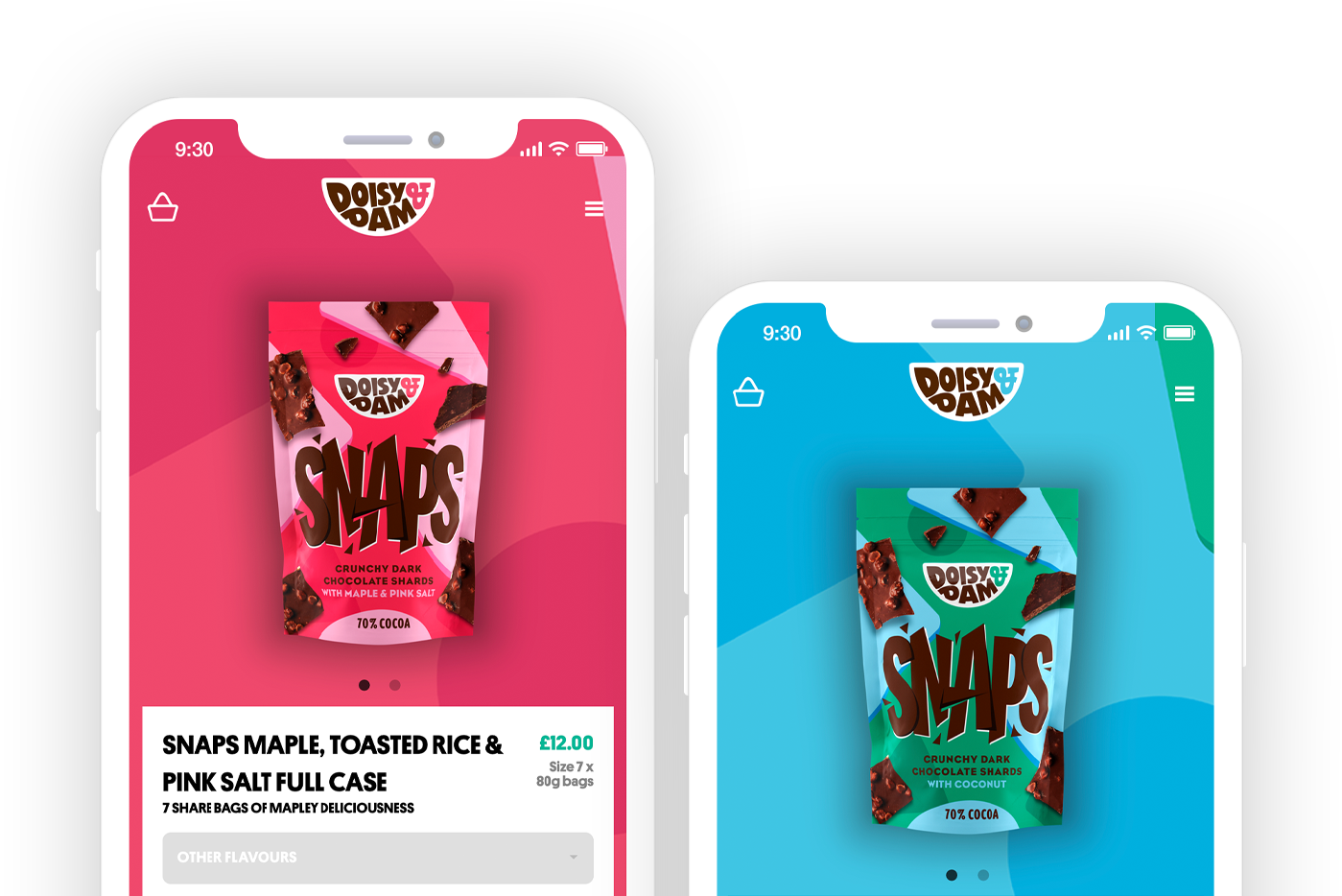1. Explosive Growth
The exponential growth of online video consumption is reshaping the digital landscape. Cisco's Annual Internet Report forecasts a monumental shift, projecting that by 2023, online videos will constitute over 82% of all consumer internet traffic. This growth is driven by several factors, including the increased accessibility of high-speed internet, the widespread adoption of smartphones, and the evolution of video-sharing platforms.
This surge in video consumption isn't limited to entertainment; it extends to business and marketing strategies. Brands are recognising the potential of video as a powerful tool to engage audiences, convey messages effectively, and drive conversions.
2. Engagement Amplified
The impact of video on engagement metrics cannot be overstated. Studies reveal that integrating video content into a landing page can boost conversion rates by an astounding 80%. This heightened engagement stems from the captivating nature of videos, which combine audio, visuals, and storytelling to deliver a compelling message.
Moreover, a report by Wyzowl emphasises that 68% of consumers prefer to learn about products or services through video. The immersive experience offered by videos not only captures attention but also fosters a deeper understanding of the content being presented, resulting in increased engagement and higher conversion rates.
3. Social Media Dominance
Social media platforms have become thriving hubs for video consumption. The staggering statistic of Facebook generating over 8 billion video views daily highlights the immense appetite users have for video content on these platforms. Additionally, tweets containing video content are significantly more likely to be retweeted, showcasing the amplified engagement that videos garner across various social media channels.
Businesses are capitalising on this trend by tailoring their content strategies to incorporate video, leveraging the vast reach and engagement potential of social media platforms to connect with their target audience effectively.
4. Mobile's Role
The ubiquity of smartphones has revolutionised how people consume video content. Studies indicate that a staggering 90% of consumers watch videos on their mobile devices. Moreover, Google's findings that mobile video consumption grows by 100% annually underscore the pivotal role of mobile devices in driving the exponential rise in video consumption. For marketers, optimising video content for mobile viewing has become imperative. Responsive design and mobile-friendly formats are essential to ensure a seamless and engaging viewing experience across various devices.
5. SEO Boost
Integrating video content into marketing strategies can significantly impact SEO efforts. Websites that incorporate video are 53 times more likely to rank on the first page of Google search results. This enhanced visibility is attributed to various factors, including increased user engagement, longer dwell times on webpages hosting videos, and lower bounce rates.
Search engines prioritise user experience, and the presence of engaging video content positively influences these metrics, signaling to search algorithms the relevance and value of the content.
6. Consumer Behaviour Insights
Understanding consumer behaviour is paramount in crafting effective marketing strategies. Studies reveal that 95% of viewers retain a message when consumed through video, compared to a mere 10% retention rate for textual content. Additionally, a significant 72% of people express a preference for using video to learn about a product or service.
The ability of video to convey information in an engaging and memorable manner significantly influences consumer decision-making processes, making it an invaluable tool for marketers seeking to connect with their audience on a deeper level.
7. ROI Advantages
Investing in video marketing yields substantial returns for businesses. A survey conducted by Wyzowl found that 83% of marketers agree that video provides a good return on investment (ROI). Furthermore, 88% of video marketers reported experiencing a positive ROI from their video marketing efforts.
These statistics underline the efficacy of video as a strategic investment, capable of generating significant returns and contributing to the overall success of marketing campaigns.
8. Email Engagement
Incorporating video content into email marketing campaigns can have a transformative effect on engagement rates. Studies show that including video in an email can increase click-through rates by an impressive 200-300%. Moreover, videos embedded within emails have been found to reduce unsubscribe rates by up to 26%.
Videos in emails offer a dynamic and compelling way to convey messages, captivate recipients' attention, and drive desired actions, making them an indispensable tool in email marketing strategies.
9. Live Video Impact
The emergence and popularity of live video have opened new avenues for engaging audiences in real-time. Platforms embracing live video, such as Facebook Live, have witnessed a significant surge in engagement levels. Facebook Live videos, for instance, receive six times more interactions than regular videos, showcasing the immense appeal and engagement potential of live content.
Businesses are leveraging live video to foster authentic connections, interact directly with their audience, and create immersive experiences that resonate deeply with viewers.
10. Storytelling Potential
The storytelling prowess of videos transcends conventional marketing approaches. A well-crafted narrative presented in video format has the capacity to evoke emotions, build brand affinity, and drive action. Research indicates that 80% of consumers find demonstration videos particularly helpful when making purchasing decisions, highlighting the persuasive power of storytelling through video content.
By leveraging storytelling elements effectively, businesses can create compelling narratives that resonate with their target audience, leaving a lasting impression and influencing consumer behaviour.
11. Video Length Matters
The optimal video length plays a crucial role in maintaining viewer engagement. Research indicates that videos up to 2 minutes in duration tend to receive the highest engagement rates across various platforms. However, context is key, and for specific content types such as product demos, tutorials, or in-depth educational content, audiences exhibit a willingness to invest time in longer videos, with engagement peaking for videos between 6 to 12 minutes. Utilizing a
free video editor can help creators optimize their content to fit these preferred lengths and formats. Understanding audience preferences and tailoring video lengths accordingly can significantly impact viewer retention and overall engagement.
12. Emotional Resonance
Emotional appeal is a driving force behind successful video campaigns. Studies reveal that advertisements eliciting strong emotional responses are twice as likely to be shared compared to those evoking weaker emotions. Emotional storytelling within videos creates a deeper connection with the audience, fostering brand loyalty and increasing the likelihood of content sharing. By strategically crafting videos that resonate emotionally, brands can forge stronger connections and leave a lasting impression on their audience.
13. Video Accessibility
Enhancing video accessibility through features like captions or transcripts is pivotal in reaching a wider audience. A Facebook study discovered that captioned videos increased view time by an average of 12%. Beyond improving engagement metrics, accessibility features cater to audiences with hearing impairments, ensuring a more inclusive viewing experience and bolstering overall user satisfaction. Investing in accessibility not only expands reach but also aligns with ethical and inclusive marketing practices.
14. Video Personalisation
Personalised video content yields remarkable results in marketing campaigns. According to a HubSpot report, personalised video messages in marketing emails can increase click-through rates by up to 985%. Tailoring videos based on viewer data and preferences, such as using their name or addressing specific interests, enhances engagement and drives conversions. Leveraging personalisation in videos demonstrates a brand's attentiveness to its audience, fostering a deeper connection and driving meaningful interactions.
15. Explainer Videos Impact
Explainer videos serve as powerful tools in simplifying complex ideas or introducing products/services concisely. Businesses leveraging explainer videos witness a significant increase of up to 74% in the understanding of their offerings among consumers. These informative and visually engaging videos effectively communicate value propositions and functionalities, aiding in educating potential customers and driving them towards conversion.
16. Video Sharing Behaviour
The potential for video content to be shared across social networks is substantial. Social videos have been found to generate 1200% more shares than text and images combined. Encouraging elements such as humor, valuable insights, or emotional resonance prompt viewers to share content within their networks, amplifying organic reach. Crafting shareable videos becomes an essential strategy in maximising brand visibility and fostering community engagement.
17. Video Testimonials Influence
Customer testimonials hold significant sway, particularly in video form. Research indicates that 84% of people trust online reviews as much as personal recommendations. Video testimonials add authenticity and credibility to products or services, creating a powerful impact on potential customers. The visual element of real customers sharing positive experiences builds trust and serves as social proof, influencing purchasing decisions and fostering a sense of reliability around the brand.
18. Call-to-Action Impact
The inclusion of a clear and compelling call-to-action (CTA) within video content can significantly impact viewer behaviour. Videos featuring embedded CTAs have been shown to boost conversion rates by an impressive 380%. A well-crafted CTA guides viewers towards the desired next steps, whether it's making a purchase, subscribing to a newsletter, or visiting a website. Strategically placed CTAs within videos maximise the effectiveness of marketing campaigns by directing audience actions.
19. Virtual Events & Webinars Surge
The global pandemic accelerated the surge in virtual events and webinars as businesses adapted to remote interactions. Virtual event platforms reported an unprecedented 1000% increase in usage. Video became the go-to medium for hosting events, connecting with audiences, and delivering valuable content. Businesses harnessed the versatility of video formats, showcasing their adaptability in engaging and educating audiences in a remote landscape.
20. Interactive Video Engagement
Interactive videos, featuring elements like quizzes or clickable hotspots, lead to significantly higher engagement levels. Incorporating these interactive elements has shown to increase user activity by a staggering 591%. These immersive experiences captivate audiences, keeping them engaged throughout the video. By offering viewers an active role in the content, interactive videos not only enhance user experience but also facilitate better understanding and retention of information.
21. Video Ad Completion Rates
The completion rates of video ads provide insights into viewer engagement. Studies suggest that shorter video ads, around 15 seconds, have a higher completion rate of approximately 70%. However, longer video ads, exceeding 30 seconds, exhibit a slightly lower but still significant completion rate of about 50%. Crafting concise yet compelling video ads ensures higher viewer retention and message delivery.
22. Social Platform Preference for Video
Different social media platforms have varying preferences for video content. For instance, YouTube dominates long-form content, with over 70% of users preferring videos longer than 5 minutes. On the other hand, Instagram thrives on shorter videos, with 60% of users engaging with videos under 60 seconds. Understanding platform-specific preferences aids in tailoring video content for maximum impact and engagement.
23. Video Content Consumption Habits
Analysing video consumption habits reveals valuable patterns. Research shows that 55% of viewers consume videos thoroughly, watching from start to finish. Additionally, 65% of viewers skip through the middle section of videos. This behaviour underscores the importance of captivating introductions and maintaining engaging content throughout to retain viewer interest.
24. Video Metrics and ROI Tracking
Measuring video metrics facilitates better ROI tracking. Studies indicate that 52% of marketers consider video analytics crucial for understanding performance and optimising future content. Metrics like view counts, watch time, click-through rates, and conversions provide actionable insights for refining video strategies and maximising returns.
25. Vertical Video Popularity
Vertical videos have gained significant traction, especially on mobile devices. Platforms like TikTok and Instagram Stories prominently feature vertical video content, with research indicating that vertical videos yield a 130% higher engagement rate than horizontal videos. Leveraging vertical formats aligns with mobile viewing habits, enhancing user experience and engagement.
26. Video SEO Importance
Optimising videos for search engines enhances visibility. Video SEO practices can increase the likelihood of appearing on the first page of search results by 53 times. Implementing tactics such as keyword optimisation, metadata enhancements, and transcript inclusion strengthens the video's discoverability and ranking.
27. Video Content Diversity
Diversifying video content types caters to varied audience preferences. Statistics show that 68% of consumers prefer educational or how-to videos, while 52% enjoy product reviews. Additionally, 50% engage with entertaining content, emphasising the importance of creating a diverse range of video content to resonate with different audience segments.
28. Global Video Consumption Trends
Globally, video consumption continues to soar. On average, people spend over 100 minutes daily watching online videos. Moreover, regional variations highlight evolving viewing habits; Asia-Pacific leads with an average of 105 minutes, followed by the Americas with 92 minutes and Europe with 80 minutes. These consumption trends underscore the universal appeal and significance of video content in today's digital era.
Video Marketing Statistics Conclusion
In conclusion, the statistics surrounding video marketing paint a compelling picture. From exponential growth to heightened engagement and ROI, the power of video in today's marketing landscape is undeniable. Businesses that harness the potential of video stand poised to captivate audiences, drive conversions, and carve a lasting impact in a visually-driven digital era.
By leveraging these statistics and crafting compelling video content, businesses can effectively navigate the dynamic realms of digital marketing, amplifying their brand presence and captivating their target audience.
.
Video Marketing Statistics Summary
Embark on an expansive journey through the realm of video marketing tools and strategies, uncovering an array of statistics that serve as the cornerstone of decisions and tactics in the global marketing landscape. Learn why marketing professionals hail video as an indispensable marketing tool, steering sales and bolstering brand awareness for internet users worldwide. Delve deep into the impact of product videos, streams, and their resonance with the tech-savvy millennials. Gain invaluable insights into budgets, purchase decisions, and revenue generation that drive success for companies. This comprehensive article navigates through B2B and B2C strategies, leveraging vlogs, streaming options, and diverse apps. Drawing insights from credible sources like Statista, it presents a holistic guide to refining video marketing strategies, ensuring a dominant industry presence and robust engagement across platforms, while meticulously crafting sound marketing plans for unparalleled success.
For a more marketing leverage, a streamlined marketing strategy incorporates LinkedIn for software-related inquiries and comments. Utilising stats, it targets a majority of video viewers, exploring diverse ways to engage. Understanding the reasons behind video's impact, companies allocate budgets for enhanced reach and purchases. Considering everything, video stats guide resources, posts, and links, addressing the needs of social media videos. Challenges and costs vary, but for B2B marketers, signs point to video's efficacy. With video streaming omnipresent, shorts are everywhere—across China, Sweden, and beyond. By internalising these stats, you can create a competitive advantage between your store and others by identifying video marketing trends, refine your video marketing strategy, and have any questions answered about the industry. As a growing company, these things should be at the forefront of anything and everything you do. These are just some of the number of video marketing stats out there
.
Read Top Shopify Statistics 2025
Read Top Ecommerce Statistics 2025
Read Top TikTok Statistics 2024
Read Top Twitter / X Statistics 2025
Read Top Snapchat Statistics 2025
Read Top Influencer Marketing Statistics 2025


 Ross Adamson |
Marketing Exec - Charle Agency
Ross Adamson |
Marketing Exec - Charle Agency










